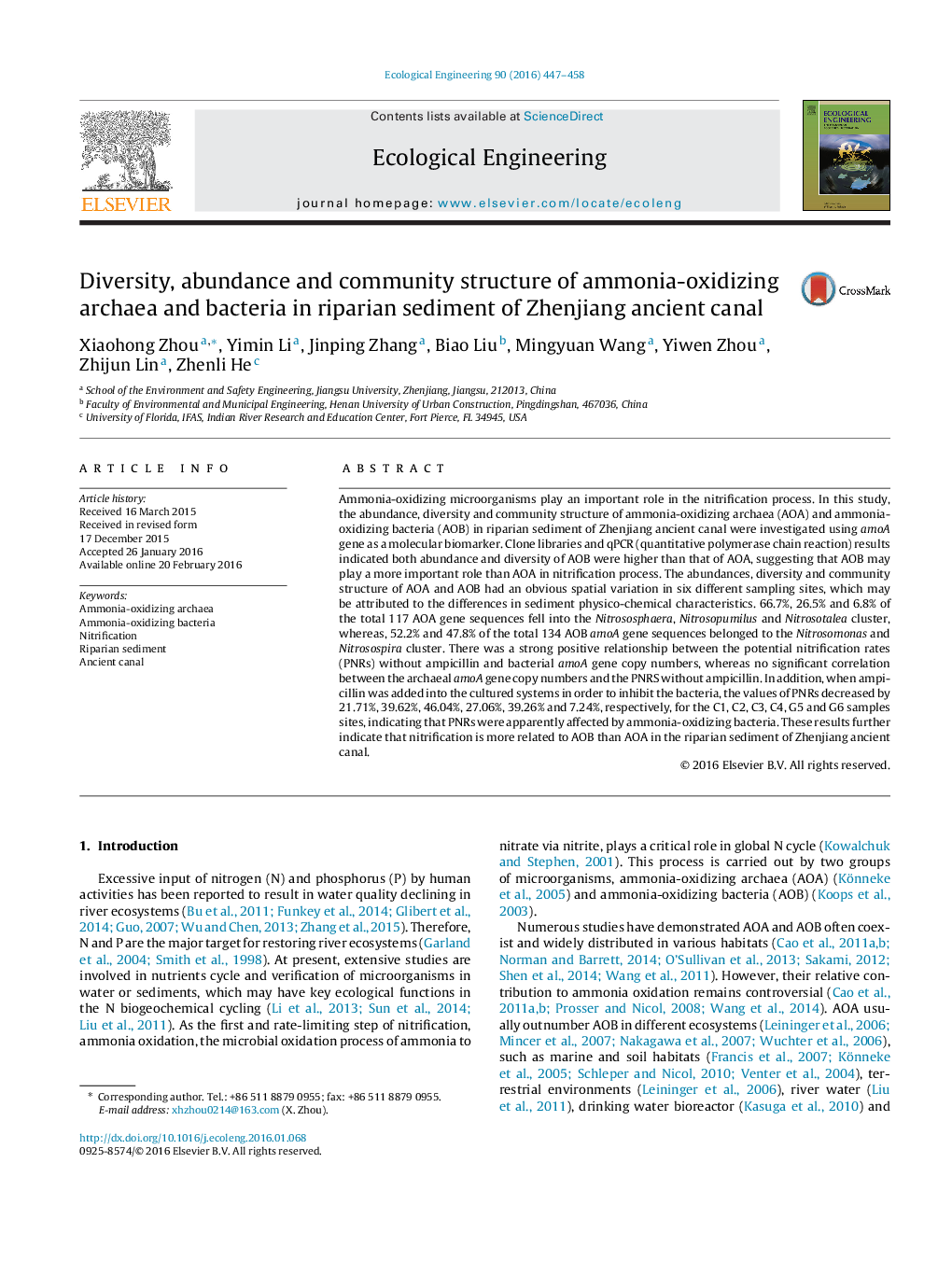| Article ID | Journal | Published Year | Pages | File Type |
|---|---|---|---|---|
| 4388694 | Ecological Engineering | 2016 | 12 Pages |
Ammonia-oxidizing microorganisms play an important role in the nitrification process. In this study, the abundance, diversity and community structure of ammonia-oxidizing archaea (AOA) and ammonia-oxidizing bacteria (AOB) in riparian sediment of Zhenjiang ancient canal were investigated using amoA gene as a molecular biomarker. Clone libraries and qPCR (quantitative polymerase chain reaction) results indicated both abundance and diversity of AOB were higher than that of AOA, suggesting that AOB may play a more important role than AOA in nitrification process. The abundances, diversity and community structure of AOA and AOB had an obvious spatial variation in six different sampling sites, which may be attributed to the differences in sediment physico-chemical characteristics. 66.7%, 26.5% and 6.8% of the total 117 AOA gene sequences fell into the Nitrososphaera, Nitrosopumilus and Nitrosotalea cluster, whereas, 52.2% and 47.8% of the total 134 AOB amoA gene sequences belonged to the Nitrosomonas and Nitrosospira cluster. There was a strong positive relationship between the potential nitrification rates (PNRs) without ampicillin and bacterial amoA gene copy numbers, whereas no significant correlation between the archaeal amoA gene copy numbers and the PNRS without ampicillin. In addition, when ampicillin was added into the cultured systems in order to inhibit the bacteria, the values of PNRs decreased by 21.71%, 39.62%, 46.04%, 27.06%, 39.26% and 7.24%, respectively, for the C1, C2, C3, C4, G5 and G6 samples sites, indicating that PNRs were apparently affected by ammonia-oxidizing bacteria. These results further indicate that nitrification is more related to AOB than AOA in the riparian sediment of Zhenjiang ancient canal.
